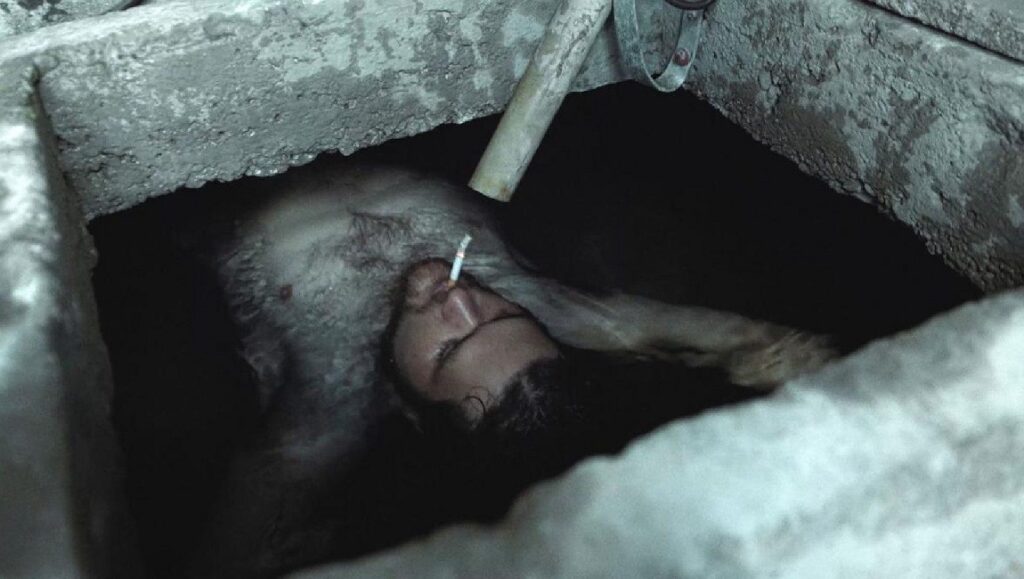Shot between August 2016 and January 2017 in the Dom Pedro Hotel in the slums of Sao Paulo, Brazilian filmmaker Maíra Bühler’s Let it Burn is a somber, delicate portrait of broken people living in limbo. The film has no on screen text or identifying markers of any kind, even the small bit of information above comes from a brief coda at the end of the film. Buhler seems less interested in facts and context than in simply recording denizens of the hotel, themselves never identified by name. Instead, Buhler films almost everything in intimate closeups, as we are privy to quiet, emotional moments between friends and lovers, as well as brazen, unapologetic drug use and both physical and emotional violence. The film is basically a series of vignettes, but Buhler has loosely organized them so that they flow, have a rhythm. It’s not a stringent structure, but instead a gradual sense of convergence, as the tenants caress each other or lay in bed together, that then transforms into something else. People begin to separate, arguments break out, couples break up and threaten each other, tears are shed. And throughout there are brief musical interludes — even in this place, people tend to have a song in their hearts. The film is at times reminiscent of Pedro Costa’s early work, when he was mixing documentary and fiction modes with the residents of the Fontainhas slums, as well as the recent abstract portraiture work of Khalik Allah’s Field Niggas and Black Mother. Let it Burn isn’t as accomplished as those other works, as Buhler is working in a more traditional verite mode and seemingly uninterested in any blatant expressionism. But this is still an invaluable document, giving voice to those who have none, telling them that their lives matter and that their stories should be told.
Published as part of Neighboring Scenes 2020.


Comments are closed.